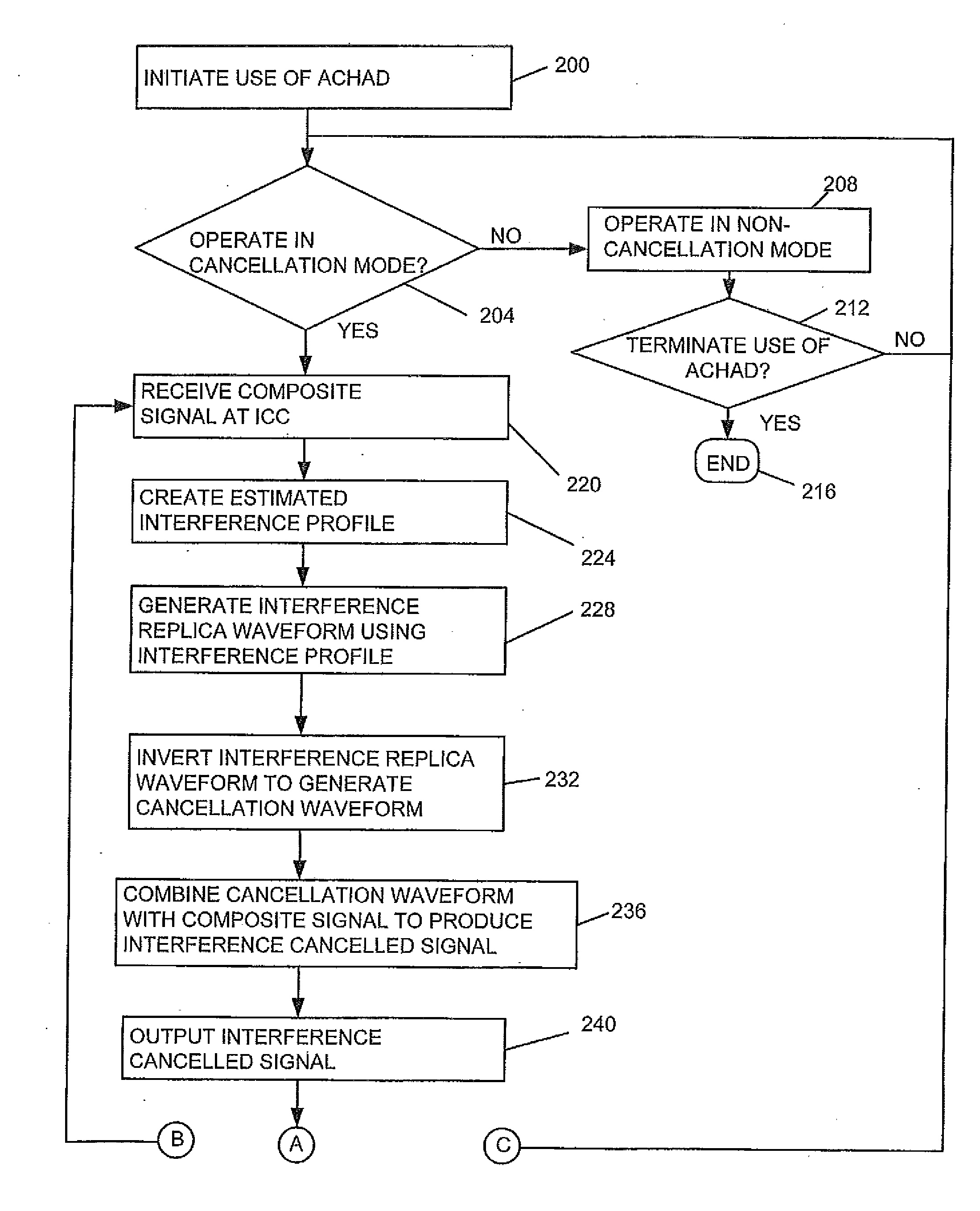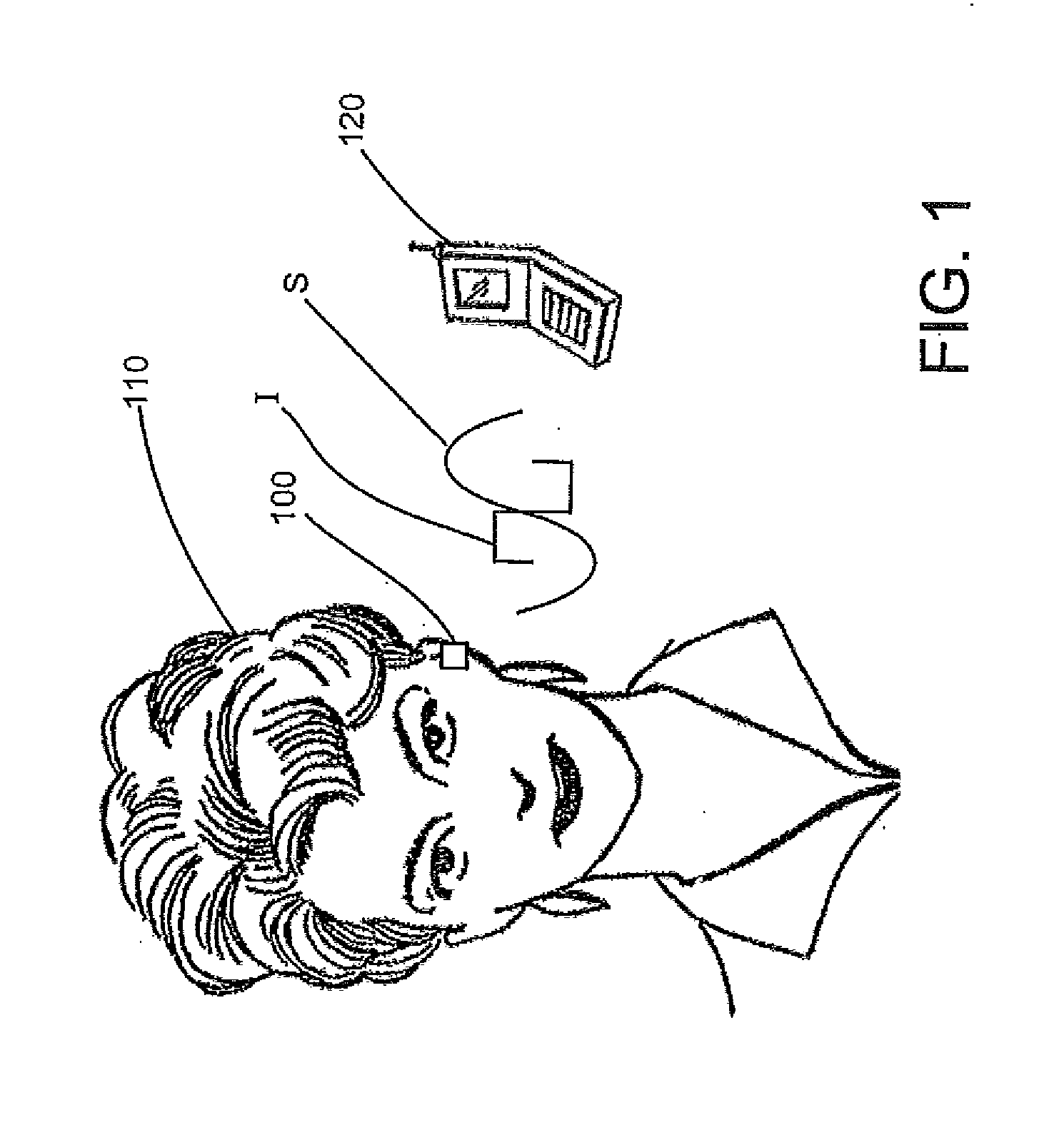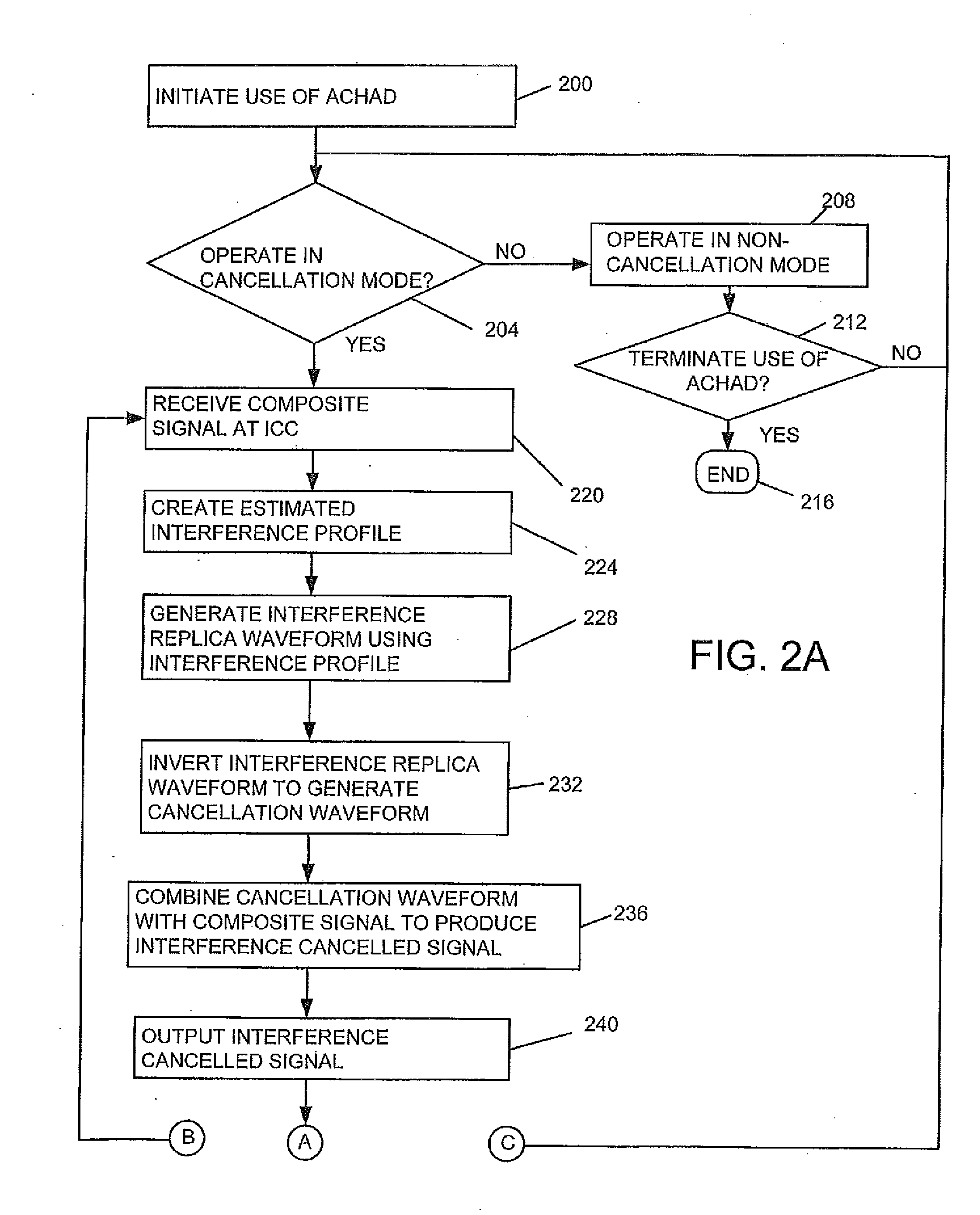Active Cancellation Hearing Assistance Device
a technology of applied in the field of active cancellation hearing aids and hearing aids, can solve the problems of introducing interference signals, unsatisfactory interference may be induced in the hearing aid circuitry, and increasing the difficulty of hearing aid users, and achieve the effect of high quality audio
- Summary
- Abstract
- Description
- Claims
- Application Information
AI Technical Summary
Benefits of technology
Problems solved by technology
Method used
Image
Examples
Embodiment Construction
[0019]In general, the devices and methods presented herein are directed toward providing a Hearing Assistive Device (HAD) that actively eliminates interference received at the HAD. The invention as taught can be used to cancel RF interference generated by digital devices, such as but not limited to, digital cellular telephones, digital cordless phones, and portable digital radios, allowing a HAD-equipped user to operate such devices without experiencing audio signal degradation due to the presence and amplification of RF interference. The present invention can also be used to eliminate interference from analog apparatus, such as power transformers, fluorescent lighting, and power lines that produce strong electromagnetic field static that are frequently inductively coupled into telecoil-equipped HADs. By eliminating the interference, the invention allows a user to avoid the irritating humming sound that may result when the alternating-current interference is amplified. For the non-l...
PUM
 Login to View More
Login to View More Abstract
Description
Claims
Application Information
 Login to View More
Login to View More - R&D
- Intellectual Property
- Life Sciences
- Materials
- Tech Scout
- Unparalleled Data Quality
- Higher Quality Content
- 60% Fewer Hallucinations
Browse by: Latest US Patents, China's latest patents, Technical Efficacy Thesaurus, Application Domain, Technology Topic, Popular Technical Reports.
© 2025 PatSnap. All rights reserved.Legal|Privacy policy|Modern Slavery Act Transparency Statement|Sitemap|About US| Contact US: help@patsnap.com



